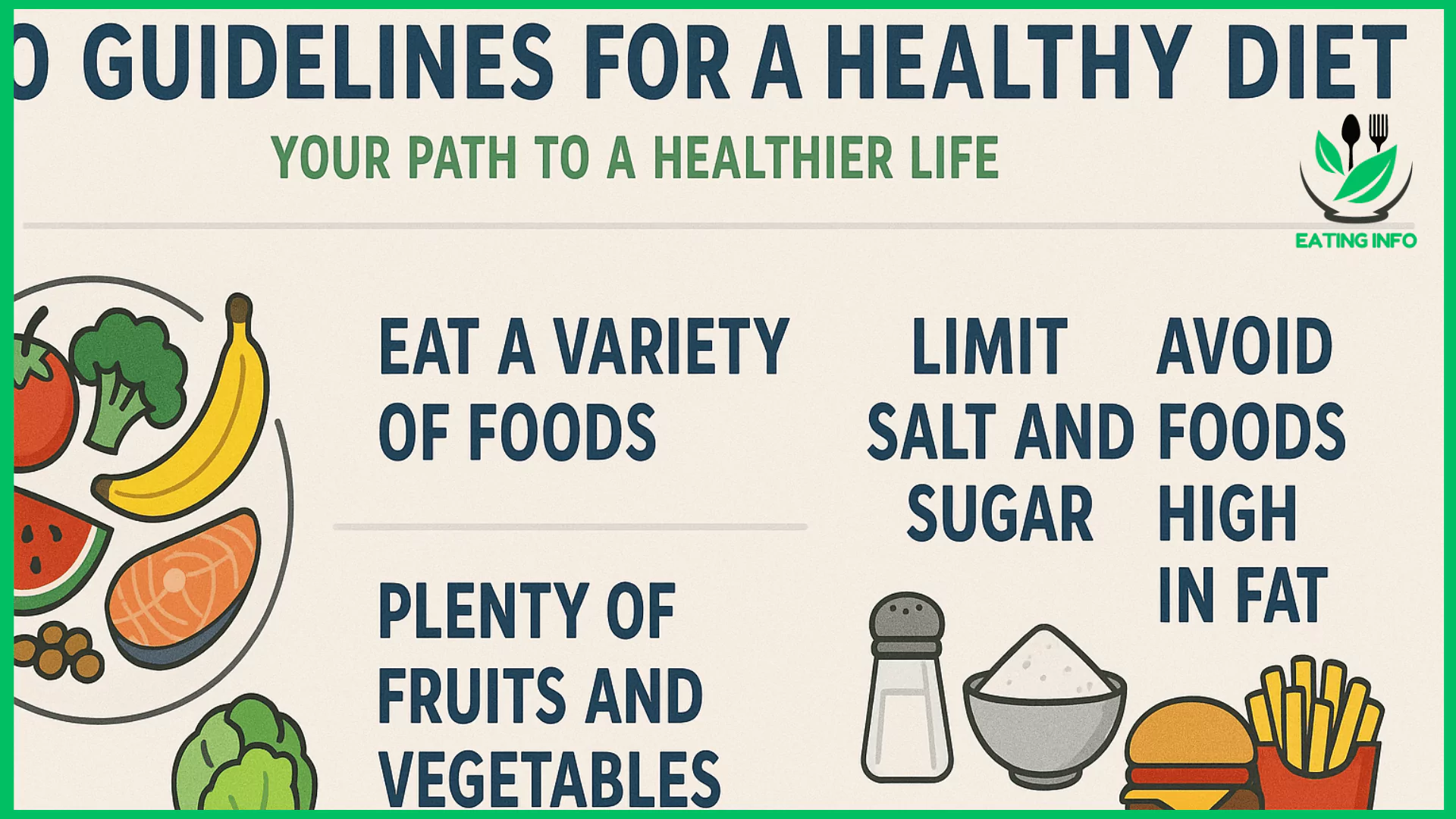Healthy eating is the key to a healthy, long life. However, in today’s busy lifestyle, the meal is filled with unhealthy food options and processed food. The reason behind this is an increase in obesity, diabetes, cardiovascular disease, and other chronic diseases. The World Health Organization (WHO) has developed evidence-based food guidelines to encourage individuals across the globe to eat a healthy diet.
These aren’t just suggestions about eating less or counting calories—they’re about creating a healthy, nutrient-rich diet that fuels your body, fights disease, and enhances your overall health. If you’re ready to take control of your well-being, let’s talk about WHO’s guidelines and how you can apply them in daily life.
Understanding the WHO’s Healthy Diet Guidelines
The WHO’s dietary guidelines focus on:
- Eating a variety of nutrient-dense foods
- Limiting unhealthy fats, salt, and sugar
- Consuming enough fruits, vegetables, whole grains, and lean proteins
- Staying hydrated and controlling portion sizes
The goal is simple: to promote good health, prevent chronic diseases, and improve the quality of life for people worldwide.
The Role of a Balanced Diet
A balanced diet provides your body with essential nutrients, including:
Carbohydrates – Your body’s main fuel source (whole grains, fruits, vegetables).
Proteins – Build and repair tissues (lean meat, fish, eggs, beans).
Fats – Support brain function and cell development (avocados, nuts, olive oil).
Vitamins & Minerals – Essential for immune function and body processes (fruits, vegetables, dairy).
Adhering to WHO’s dietary guidelines, you can make sure your body receives everything it needs to perform at its best.
Consuming Enough Fruits and Vegetables
WHO recommends consuming at least 400g (5 portions) of vegetables and fruits per day to reduce chronic diseases.
Why Fruits and Vegetables Matter
Rich in fiber, which supports digestion.
Loaded with vitamins and antioxidants, which enhance immunity.
Helping to reduce the risk of heart disease, stroke, and some cancers.
How to Add More Fruits and Vegetables
Include fruits in breakfast foods or yogurt.
Use fresh fruit or vegetable sticks instead of snacks.
Half of the plate with vegetables in all meals.
Restricting Salt and Sodium Intake
More salt intake leads to high blood pressure, stroke, and cardiovascular disease. WHO advises fewer than 5g (one teaspoon) daily salt.
How to Cut Back on Salt
- Avoid processed foods that contain hidden sodium.
- Cook meals with fresh ingredients instead of packaged ones.
- Use herbs and spices for flavor instead of salt.
Limiting Sugar Consumption
Excess sugar is linked to obesity, diabetes, and tooth decay. WHO recommends that less than 10% of total energy intake should come from free sugars (ideally below 5%).
Ways to Reduce Sugar
- Drink water instead of sugary beverages.
- Choose fresh fruits over sweetened snacks.
- Check food labels for hidden sugars.
Choosing Healthy Fats Over Unhealthy Fats
Not all fats are bad! WHO suggests limiting saturated fats (butter, red meat) to less than 10% of total energy intake and trans fats (processed foods) to less than 1%.
Healthy Fat Choices
Understanding Portion Control
Overeating, even healthy foods, can lead to weight gain. WHO recommends:
- Eating smaller meals more frequently.
- Using smaller plates to help control portions.
- Avoid eating out of large packages.
The Role of Physical Activity in a Healthy Diet
A healthy diet alone isn’t enough—regular physical activity is key. WHO advises:
- 150 minutes of moderate exercise per week.
- Strength training at least twice a week.
Special Considerations for Different Age Groups
For Children:
- Focus on nutrient-dense foods for growth.
- Limit sugary snacks and fast food.
For Adults and Seniors:
- Maintain a balanced diet to prevent chronic diseases.
- Stay hydrated and active to support metabolism.
How to Implement WHO’s Guidelines in Your Daily Life
- Plan meals ahead to avoid unhealthy choices.
- Read nutrition labels to make informed decisions.
- Cook more at home to control ingredients and portions.
The Impact of a Healthy Diet on Global Health
By following WHO’s dietary guidelines, you’re not just improving your own health—you’re contributing to a healthier society. A nutritious diet reduces hospital visits, boosts productivity, and enhances overall well-being.
A healthy diet doesn’t have to be complicated. Small, consistent changes—like adding more vegetables, reducing sugar, and controlling portions—can have a huge impact on your health. WHO’s guidelines serve as a roadmap to a better, healthier life.
FAQs
How can I eat healthier from today?
Begin with simple steps—replace soda with water, eat more vegetables, and cook at home.
Why does the WHO recommend reducing sugar and salt?
Excessive sugar and salt cause obesity, diabetes, high blood pressure, and heart disease.
Are fats totally bad for health?
No! Good fats like those in nuts, olive oil, and fish are essential for brain and heart function.
How many glasses of water should I drink daily?
Drink a minimum of 8 glasses of water daily, and additional glasses if you’re physically active.
Does physical activity affect my diet?
Absolutely! A balanced diet fuels your workout, and exercise maintains your desired weight.

